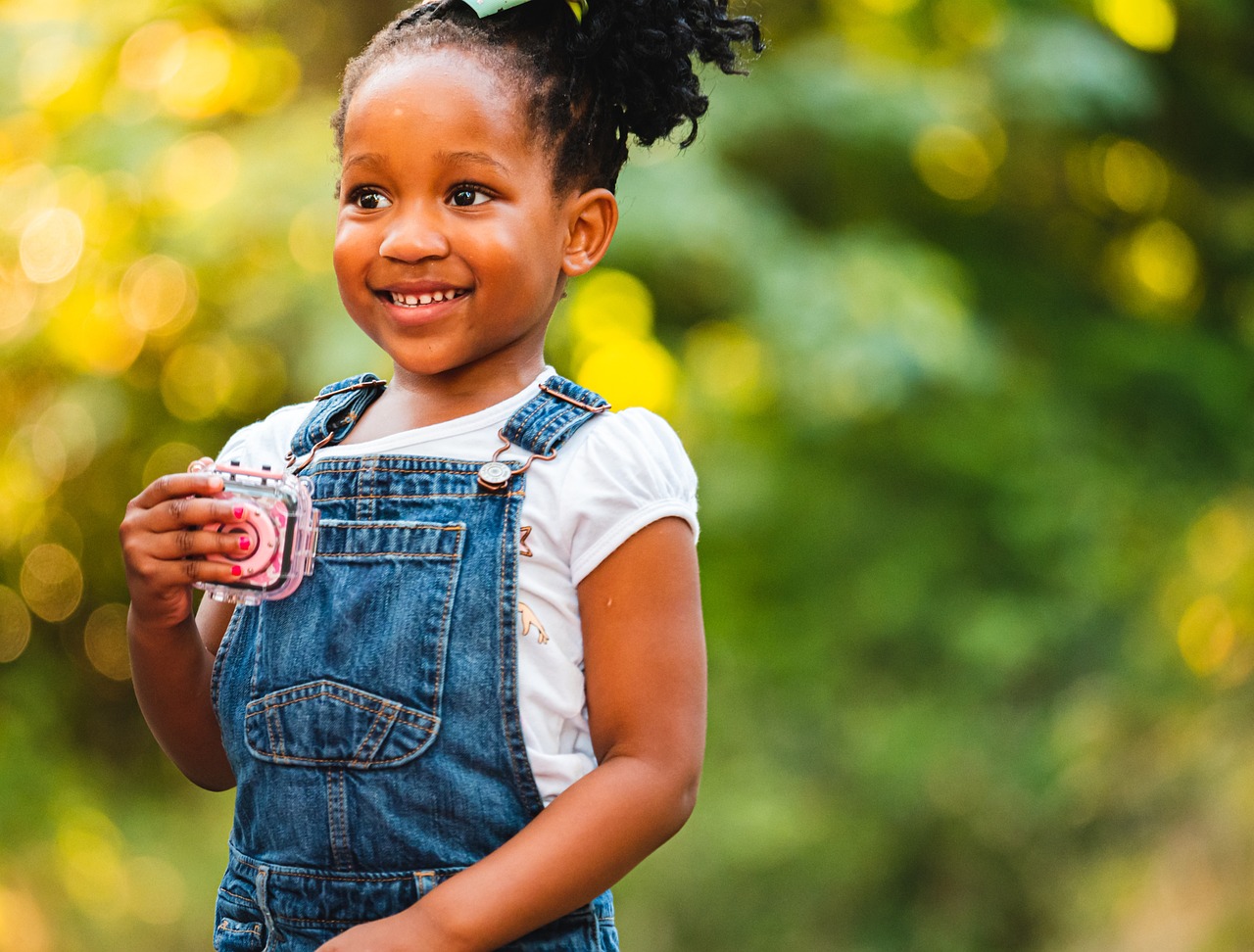Talking About Emotions from the Movie Inside Out
By: Carlie Krider Undergraduate Social Work Intern Spring-Summer 2023 Loyola University Chicago
It is not a surprise for any parent to hear that children feel big emotions and that they feel them deeply. We see this through their most noteworthy reactions, including bursts of excitement or joy and the often dreaded fits of screaming and crying. As a parent or guardian, it can be difficult to brainstorm ideas on how to best support your child as they develop their emotional competency. To help your brainstorming efforts, I have some specific tips and ideas that you can easily incorporate to help your child flourish… and it includes what may just be one of your child’s favorite movies already.

Pixar’s 2015 movie Inside Out tells the story of 11-year-old Riley and the 5 emotions that occupy her brain. This movie provides a heartwarming, family-friendly story, but if you look a little deeper, it is the perfect movie to help children begin to develop their emotional knowledge. All you need to do is sit back with your child, press play, and be ready to discuss emotions at multiple pausing points during the movie (you can also turn these points into lessons after the movie if that works better for you and your child).
Naming and Identifying:
There are 5 emotions described in Inside Out: Joy, Sadness, Fear, Disgust, and Anger. Each emotion is introduced within the first scene of the movie. This is a great place to press pause and have your first conversation. You can ask your child to repeat and name all of the emotions. This can be followed by something as simple as: “when was a time that you felt [insert one of the five emotions]?”
Tips:
- Answer the second question yourself, too. Showing your child that you also experience emotions is an important model for them to have. Try to express your emotions out loud by saying: “Wow! I am so excited about this,” “I am feeling very upset right now,” “I am angry because…,” etc (“Fostering Emotional Literacy,” 2021).
- Remember that this list of emotions is not exclusive (“Teaching Your Child,” n.d.). There are many feeling words that children should be exposed to. You can incorporate these in your conversations, too.
- Cheerful
- Confused
- Embarrassed
- Surprised
- Ignored
- Excited
As you continue the movie, be sure to point out the distinctions in how Riley is feeling. Although this may seem like common sense to you, it is important for your child to start verbalizing feeling words. Each emotion takes over Riley’s brain’s control center at different points in the movie. These scenes would be a perfect point to pause and discuss.
- Example Scene: On Riley’s first day at her new school, she begins to introduce herself and quickly becomes sad while talking about a core memory of playing hockey on the frozen lake. As the scene progresses, you see Sadness touch the memory, causing Riley to feel sad. You can pause the scene here and ask your child questions such as:
- “What is Riley feeling right now?”
- “How do you know?”
- “Have you ever felt that way?”
- “What do you do when you feel that way?”

It is important to begin to talk about coping strategies (the “what do you do”). You can incorporate discussions about how to respond to feelings throughout your daily activities. If you get frustrated, you can verbalize that you are going to take a deep breath, speak calmly, and figure out what to do. You also can verbalize these when you see big emotions in your child: “You look upset. What do you think you can do? [If possible, pause here to let them think, but then continue to give them support on what to do.] You could take a deep breath and calmly ask for help” (“Teaching Your Child,” n.d.)
Validating Emotions:
Throughout the movie, you will see that Joy tries to suppress Sadness. By the end of the movie, Joy realizes that Sadness is an important part of Riley’s emotional well-being. Emotions like sadness, anger, and fear are not “bad” emotions, and it is important to teach children that concept.
- One scene that fosters this conversation is when Sadness comforts Bing Bong, Riley’s imaginary friend. In this scene, Joy tries to look past Bing Bong’s sadness about his rocket ship being taken, but nothing that she does helps Bing Bong feel better. It isn’t until Sadness sits down with him, labels his feelings as being sad, and validates them that Bing Bong is able to express that he will be ok and they can continue their journey. Joy begins to understand that Sadness is not a bad emotion, but rather, it can be comforting and important to feel/express. This scene demonstrates the importance of emotional coaching rather than emotional dismissing, which may be an important lesson for all caretakers (Havighurst et al., 2013).
- You can use this scene to talk to your child about it being okay to feel and verbalize all of their emotions, even the ones that don’t feel good to be feeling.
Keep the Conversations Going:
You can review Inside Out before watching it with your child to decide if there are any other scenes that you want to incorporate in your conversations. When the movie is over, remember to continue the conversations about emotions each and every day. You can apply these topics to more than just this single movie. You can find books, use your child’s favorite tv show, or even real-life expressions of emotion to build your child’s emotional competence.
You can also utilize the Inside Out characters to do a daily emotional check-in with your child. Visuals are extremely important for children. In the TC Scholars Preschool, we have printed photos of our staff expressing a variety of emotions. Each child has the opportunity to do a daily check-in where they can point to whichever emotion(s) they are feeling that day. After watching the movie, you could do a similar activity. Start by printing out each of the five emotions and post them somewhere in your home (on the fridge, taped to a board, etc.). You could also simply pull them up on your phone if that is easier and more accessible. Each day, you and your child can do a daily check-in to encourage more conversations, continue learning how to name emotions, and express validation of all emotions.
Key Take-Aways:
- Model the behavior you want your child to express. Talk about your own emotions on a daily basis.
- Keep your conversations age-appropriate. As your child grows in their expression of emotions, begin to use more words than just “happy,” “sad,” and “mad” to encourage your child to have a wider vocabulary.
- Talk about coping strategies. Fidget toys, regulation zones, and deep breathing techniques are all ways that your child can learn to cope with their emotions. Don’t forget to tell them the ways you cope when you express your emotions, too.
- Praise is always key! Remember to praise your child when they begin to try to talk about their feelings. Even if they struggle at first, it is important to acknowledge their effort.

Works Cited
Docter, P. (Director). (2015). Inside Out [Film]. Walt Disney Pictures; Pixar Animation Studios.
Fostering Emotional Literacy in Young Children: Labeling Emotions. (2021). Early Childhood Learning & Knowledge Center. https://eclkc.ohs.acf.hhs.gov/mental-health/article/fostering-emotional-literacy-young-children-labeling-emotions
Havighurst, Wilson, K. R., Harley, A. E., Kehoe, C., Efron, D., & Prior, M. R. (2013). Tuning into Kids: Reducing Young Children’s Behavior Problems Using an Emotion Coaching Parenting Program. Child Psychiatry and Human Development, 44(2), 247–264. https://doi.org/10.1007/s10578-012-0322-1
Joseph, G. E., & Strain, P. S. (2003). Enhancing Emotional Vocabulary in Young Children. Young Exceptional Children, 6(4), 18-26.
Teaching Your Child To: Identify and Express Emotions. (n.d.) The Center on the Social and Emotional Foundations for Early Learning. http://csefel.vanderbilt.edu/documents/teaching_emotions.pdf

